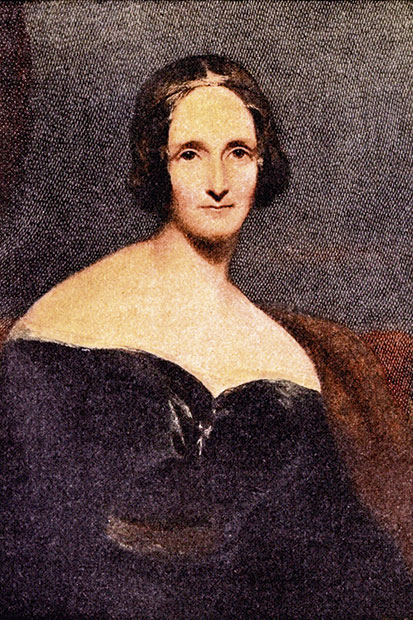If Mary Wollstonecraft, as she once declared, ‘was not born to tred in the beaten track’, the same with even greater reason could be said of her daughter Mary Shelley. Not only was she the child of the author of A Vindication of the Rights of Woman, she was also the daughter of William Godwin, the radical political philosopher. Given this auspicious pedigree, it is perhaps not surprising that Shelley would lead a life every bit as daring as her mother, and in Frankenstein produce a masterpiece of equal fame.
A joint biography of this most famous mother/daughter combination is, therefore, a good idea. Despite the fact that Wollstonecraft died a few days after giving birth to Mary, the pair led similarly rebellious lives and, through the former’s works, maintained a connection that reached beyond the grave. As Charlotte Gordon highlights in her introduction, Shelley continually re-read her mother’s books and as her husband Percy put it, Wollstonecraft’s fame would always shine on Mary, ‘through the tempests dark and wild’.
During her lifetime, and for nearly a century afterwards, however, Wollstonecraft was more infamous than famous. A radical freethinker, who for the first time articulated the gross injustices faced by 18th-century women, she was condemned as a dangerous subversive, a ‘hyena in petticoats’ (Horace Walpole) and even a whore.
Her daughter fared little better. Having eloped at the age of 16 with the decidedly wild Percy Bysshe Shelley, she was ostracised from the mainstream of British society, who were appalled at her choice of partner — a self-proclaimed atheist — and later horrified by the macabre and destructive themes in of her novels.
But if it was the patriarchy at large which was responsible for ‘outlawing’ Wollstonecraft and Shelley, the pair suffered far greater pain at the hands of the men who should have protected them. While Wollstonecraft’s father was a drunk, who squandered the family fortune and beat his wife, William Godwin was a hypocritical sponger who refused to speak to his daughter after her elopement, except to demand money. Wollstonecraft’s first love and the father of her first child, Gilbert Imlay, left her — presaging two suicide attempts — and even the beloved Percy Shelley caused his wife acute pain by becoming fixated on other women, not least on her half-sister, Claire Clairmont. No wonder both mother and daughter wrote books lambasting a world ruled by men.

Gordon is good on the trials which both women had to face and succeeds in achieving one of Wollstonecraft’s own aims: to ‘show her readers what it felt like to be powerless, what it was like to be a woman without legal recourse, poor, abused and at the mercy of others’. Unfortunately, though, this book suffers from a number of defects. Considering the trove of literature which they left behind them — including hundreds of letters and diary entries — it seems extraordinary that Gordon allows her subjects so little space to speak for themselves. Instead, her book is written like a novel, with the author assuming the role of omnipresent observer. Thus we learn that sorrow trailed behind the young Mary Shelley ‘like the train of a wedding dress’.
Gordon has structured her joint account so that the two lives (despite overlapping for only 11 days) run concurrently, with chapters alternating between the two. This was surely the right decision, emphasising the purpose of a joint biography. But this non-chronological approach is undermined by a lack of historical context as well as a number of errors. Writing of the young Mary Shelley’s 1812 trip to Scotland, Gordon ‘informs’ her readers that though, by this stage, ‘the Highlanders had surrendered to the Crown’, ‘they were still brandishing their swords, waiting for the chance to overthrow William IV’. This is, of course, nonsense. The Highlanders surrendered in 1745 and William IV wouldn’t come to the throne until 1830. Other false assertions include the claim that Byron left England in 1816 to pursue ‘homosexual affairs’ on the Continent — he left as a result of the scandal surrounding his separation from Lady Byron; that Britain declared war on France in 1793 — it was the other way around; and that early-19th-century women artists ‘were by definition monsters’ — Jane Austen, Fanny Burney and Elisabeth Vigée Le Brun would beg to differ.
Yet Gordon is right in her fundamental assertion that Wollstonecraft and Shelley were extraordinary women who led sensational lives. They were romantic revolutionaries, and simply retelling their story cannot fail to captivate and provoke.
Available from the Spectator Bookshop, £20. Tel: 08430 600033





Comments